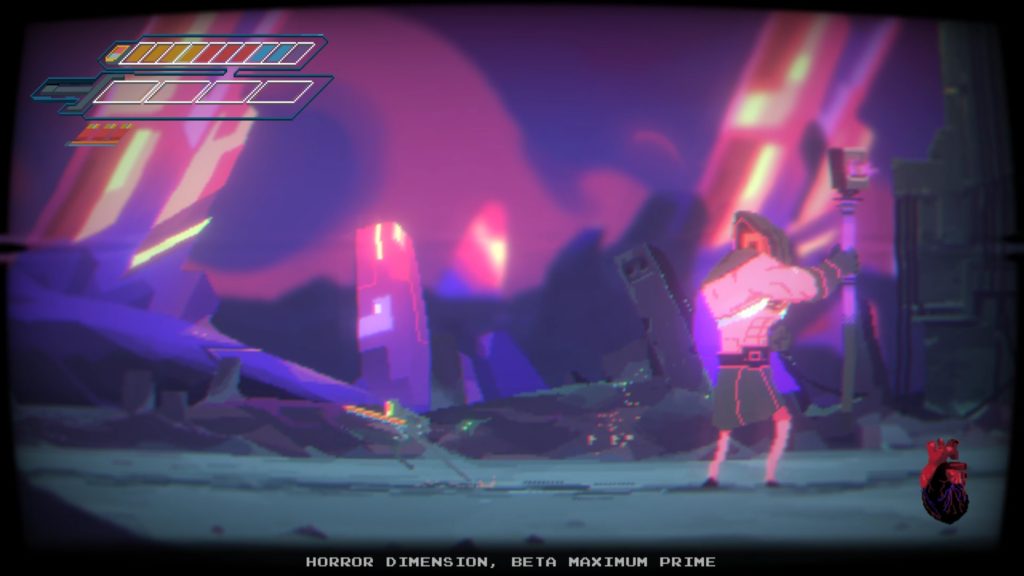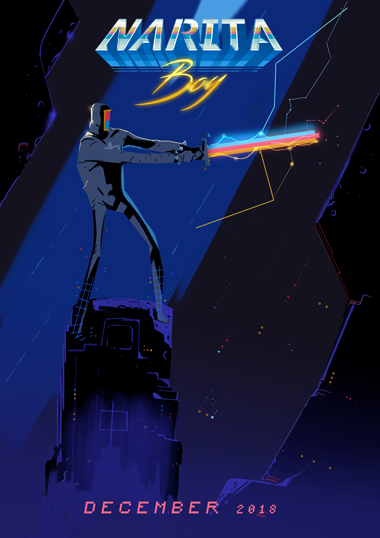


The minions which HIM will send after you are known as Stallions, and these come in a multitude of shapes and sizes and each has its own weaknesses and strengths. You can gather his backstory and his life throughout these memories, and these will guide Narita Boy on his mission to save the digital world from HIM. These prompts are in the form of a box with the creator’s head flashing, since it ultimately is the creator himself who is narrating these memories. You will find prompts to trigger comments from the creator, practically explaining what is happening inside the flashback. I love how your walking speed is also reduced to take in the scenario of the flashback. Inside these memories, the game drastically slows down the pace, and from corridors thumping with synth-style music and slashing enemies you are transported to the past of the creator, with slow, calming music playing in the background. These memories take place in a hall made up of twelve distinct doors, each unlocked at gradual stages in the game’s story. However, this is strictly not a problem for people who have never coded one line in their life before, as the game is still amazing from start to finish.Īs previously mentioned, the main task of Narita Boy is to restore the Creator’s Memories. While not a big intender of programming, I still understood a couple of references within the game, making it more enjoyable as a whole. This is because Narita Boy has strong coding references, which brought back my old computing lectures to mind.
NARITA BOY ART BOOK CODE
This collection of memories which you have to restore is the only way to bring back peace in the world, as it will permit the creator to get back his recollections and address the issue in the code of the world. Buildings and other constructions are dominated by these three tones, while environments and outdoor areas are painted a more diluted shade of these primary colours, which offer a small break from the strict monochrome nature of the buildings.Īs you progress in the main story, you are tasked to restore a number of “Creator’s Memories”, which are moments from the creator of the digital world’s past. The game keeps mentioning the Tri-Chroma, the essence of the three primary colours and these colours are the most dominant throughout the game as well. So what makes this platformer stand out from the rest?įirst of all, the game’s art style is in pixel-form, which suits the story and the soundtrack amazingly well.

So far, so good, pretty standard you might say. In order to do this, you are given the Techno-Sword, a legendary tri-coloured sword which will be your companion throughout this arduous journey. Narita Boy is one such example.ĭeveloped by Studio Koba and published by Team17, Narita Boy is a charming 2D platformer which tells the tale of Narita Boy, a boy summoned from our world to save the Digital World from the threat of HIM, an evil code which is menacing all of the digital world. That said, there is no doubt that some games do a much better job in creating a universe and a story so compelling that they outshine other narrative-driven titles. The fusion of all the elements in a game make for a much more interactive experience than the previous media forms can ever achieve, and this is because of the fact that a player is actively living through the story of the protagonist, while in a book for example, the reader is merely observing from a third person perspective. 1.2K Gaming is becoming more and more recognized as a medium by means of which the developers are able to tell a story, similarly to books, music or a movie.


 0 kommentar(er)
0 kommentar(er)
